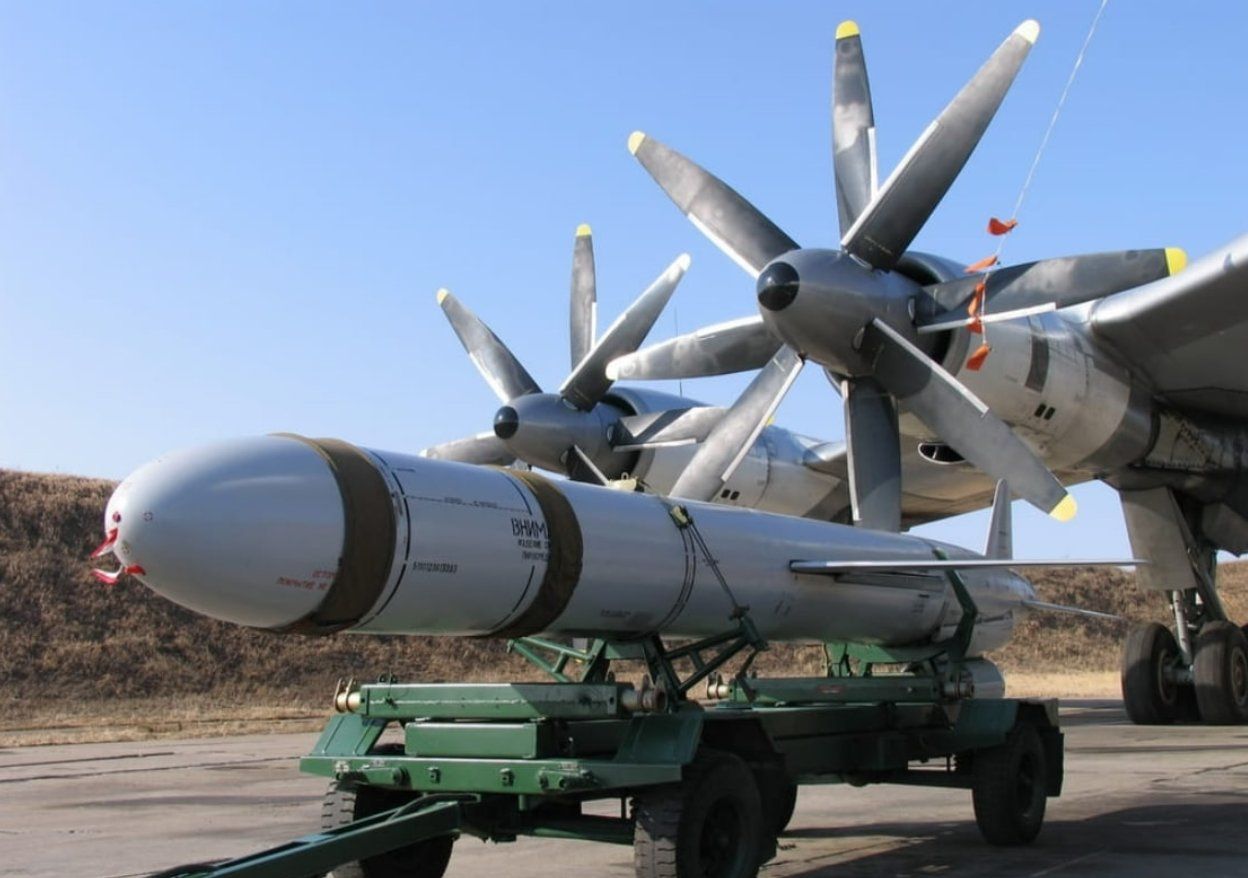The Kh-55 missiles Ukraine handed to Russia in the 1990s in exchange for security guarantees are now being used by Russia to assault the country’s civilian infrastructure, reported the New York Times on December 12.
Ukrainian intelligence personnel found the missile’s wreckage in the rubble shortly after a large number of Russian missiles struck targets across Ukraine in October. The revelation was made by Vadym Skibitskyy, Ukraine’s deputy intelligence chief, in an interview with the New York Times.
Skibitskyy said the missiles were built in the 1970s and could carry a nuclear warhead. Russia has removed the nuclear warheads and uses them as decoys to overwhelm Ukraine’s air defense system.
The missiles were manufactured at a Ukrainian weapons plant. In addition, Skibitskyy suggested that it’s possible that the aircraft from which these missiles were fired once belonged to Ukraine.
These weapons were handed to Moscow in the 1990s.

Three of the missiles used in the attack on Ukraine were produced in Ukraine, according to information obtained by Ukrainian intelligence. The three missiles are part of a larger group of upgraded, older missiles modified for use in strikes.
Ukrainian sources mentioned that the nuclear warhead simulator mounted on a Russian Kh-55 cruise missile was taken down over the Khmelnytskyi region on October 31.
In short, Russia was using Ukrainian weapons as decoys. They served a strategic purpose: launching the missiles would compel Ukraine to mobilize its air defense system in response.
“As soon as a Kh-55 missile is launched, we react to it,” General Skibitskyy recently said in an interview at military intelligence headquarters. He claimed that Russian bombers fire the more advanced missiles with destructive warheads once the Ukrainian air defenses are activated.
The Ukrainian forces said that Russian military factories have been able to manufacture 120 Kalibr naval cruise missiles and 240 high-precision Kh-101 cruise missiles since the start of the full-scale conflict.
Ukraine Defending Against Russian Attacks
The deployment of outdated cruise missiles, including those developed in Ukraine decades ago, is just one facet of a bloody, complex conflict where deception is used along with on-the-ground combat.
The third-largest nuclear arsenal in the world at the time, which Ukraine had inherited from the defunct Soviet Union, was surrendered as part of the Budapest Memorandum in the 1990s in exchange for security guarantees. All nuclear warheads were sent to Russia for decommissioning.
Additionally, all ballistic missiles and the Tu-160 and Tu-95 strategic bombers were transferred. “Now, they are using Kh-55 missiles against us with these bombers. It would be better if we handed them over to the USA,” said General Skibitsky.
The General provided a thorough evaluation of both Ukraine’s defense capabilities and present Russian capabilities. A report published last week by Conflict Armament Research, an unbiased organization in Britain that monitors conflict arms, claims that despite Western sanctions, Russia has continued to build new precision missiles, most recently in October.
According to Yurii Ihnat, the Ukrainian Air Force’s spokesperson, the latest strike left numerous fragments that suggested the precision cruise missiles used in the attack were recently manufactured.
Ukrainian officials claim they are becoming more adept at gunning down several missile and drone types thrown in their territory. But, stray missiles and drones could still cause significant damage depending on what they strike.
Brig. General Oleksiy Hromov, deputy commander of the Ukrainian General Staff, said that during November, Ukrainian air defenses took down 80% of the 80 Shahed-136 drones and 72% of the 239 Russian cruise missiles.

Kyiv claimed that the Russian bombers’ flight patterns have changed since October, taking detours to get around air defenses. However, they do not fly across Ukrainian airspace, which limits their effectiveness.
Meanwhile, a recent report stated that NATO member Slovakia is considering sending MiG-29 aircraft to Ukraine. Ukraine already operates a fleet of MiG-29s.
To maintain the operational status of its fleet of MiG-29s, which had been gradually declining, Ukraine obtained some spare parts from unidentified NATO members in April 2022.
- Contact the author at ashishmichel(at)gmail.com
- Follow EurAsian Times on Google News




